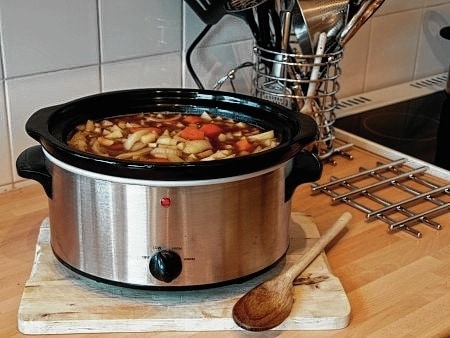
Question: One of my resolutions this year is for my family to eat healthier while I save time and money. Preparing hearty meals in a slow cooker could be one answer, but is it really safe to use?
Answer: In a word, yes.
For many people, coming home after long hours of work, school or other activities to the delicious and inviting smells of a warm, hearty meal ready to eat is a perfect ending to a hectic day, especially during a cold winter spell. Not only are slow cookers convenient, they can also help families save money by making less expensive, tougher cuts of meat — like shoulder, round and chuck steak — more tender and shrink less.
However, there are some precautions you should take to ensure that the meals you cook in your slow cooker are both safe and nutritious to eat. For example, two of the more popular food items to prepare using a slow cooker are meats and poultry, which need to be time and temperature controlled for safety.
According to the U.S. Department of Agriculture’s Food Safety and Inspection Service, it’s important to avoid cooking frozen meats and poultry in a slow cooker. Always thaw them first. This is because frozen beef or poultry won’t reach 140 degrees quick enough and could cause a foodborne illness.
Slow cookers work by cooking foods at lower temperatures – typically between 170 to 280 degrees – for several hours. This could be a concern for some foods because the bacteria that cause food poisoning multiply quickest in the “danger zone” between 40 and 140 degrees, according to Foodsafety.gov.
Be sure to use a food thermometer to accurately determine if your food has reached the proper internal temperature to kill harmful bacteria.
Other tips from the Academy of Nutrition and Dietetics and the USDA include:
Keep perishable foods, especially presliced vegetables, refrigerated and out of the danger zone. Bacteria multiply rapidly when at room temperature. To avoid this, keep your food refrigerated until it’s time to add it to the pot.
Make sure your foods fit. The slow cooker should be half to two-thirds full to ensure your food cooks thoroughly.
Position foods that take longer to cook on the bottom of the slow cooker, then arrange other solid ingredients on top, making sure to spread evenly.
Keep the lid on. It’s important to retain the heat when making a slow cooker meal. Only remove the lid to stir or check for doneness.
If possible, turn the cooker on the highest setting for the first hour of cooking time and then to low or the setting called for in your recipe. However, it’s safe to cook foods on low the entire time.
Foods take different times to cook depending on the setting used. While foods will cook faster on high than on low, for all-day cooking or for less tender cuts, you may want to use the low setting.
If you have any leftovers, it’s important to store them in a shallow covered container in the refrigerator within two hours after cooking. And, when reheating leftovers, don’t use your slow cooker – use your stove top, microwave or conventional oven to heat the food to at least 165 degrees before eating.


